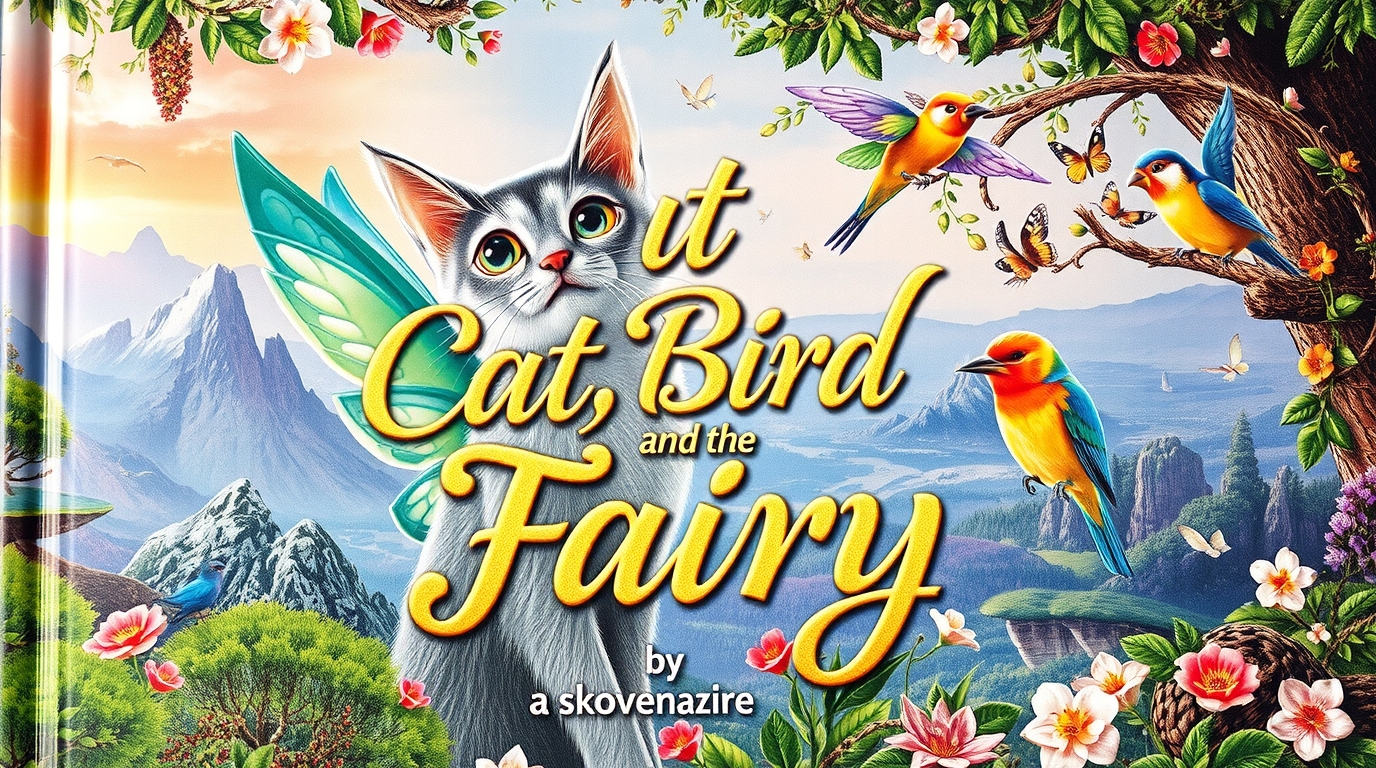
Visit the clocks' secret workshop
Cat, Bird and the Fiary in the Land of the Hobbits!
In the sunny hollows of the Hobbit country, a cat with a polka-dot scarf, a bird who recited numbers, and a tiny fiary with mismatched wings met by a stream that giggled when stones skipped. The Hobbits waved from their round doors, and the trio bowed because manners are the best sort of magic in a land of small folk. The bird had learned to count to twenty in exchange for breadcrumbs, the cat could find lost socks by smell, and the fiary practiced spelling new words so dust bunnies turned into letters. Today they faced a puzzle: the stream's song had gone flat, and without its tune, the garden clocks would forget how to tell time. The cat twitched an ear, the bird fluffed its feathers, and the fiary tapped a wing against her forehead until an idea popped like a bubble. Instead of following a map or insisting on rules, they decided to invent ways to fix the melody by mixing counting, rhyme, and color into a recipe for sound. They scattered pebbles painted with numbers, sang silly rhymes about moonbeam muffins, and sprinkled rainbow dust that smelled faintly of lemon and library books. As each strange ingredient joined the stream, tiny notes bubbled up—first a squeaky C, then a warm G, and finally a laugh that sounded like a bell and a kitten at once. The Hobbits sat on their porches, astonished, and the clocks hiccupped back into proper ticking as the stream learned a new song made of playful rules. The trio grinned, knowing they'd taught everyone that sometimes making a problem into an experiment is its own sort of wisdom.
They stepped back and coaxed the porch clocks onto the grass, and to everyone's delight brass faces and painted porcelain cuckoos found their feet and began to sway. Their ticks braided into a jaunty drumbeat that pulled the stream's new notes into a steady rhythm while shadows of hop-flowers twirled like tiny partners. A Hobbit toddler tumbled into a clap, a proud grandfather clock tried a formal two-step and bumped a teacup into a sheepish spin, and even the garden's shy sundial rolled a fraction and learned to bow. When the last note faded, time felt friendlier—enough to let small lost things wander back home—and the trio promised to teach more steps after tea.
They gathered the clocks in a circle and showed them how to move together like partners, guiding tiny hands to sway and pendulums to bow so the whole garden felt as if time itself had learned to glimmer. The cuckoo in the painted house found a jaunty curtsy, the brass mantel clock practiced leading with a gentle tick, and even the shy sundial, wobbling on a pebble, caught a rhythm by leaning just so. With each practiced turn the stream hummed a softer counter-melody and the Hobbits clapped in a polite frenzy, while lost socks and teaspoons pirouetted back into neat lines and the toddler's giggles stitched themselves into the music. When night fell the clocks eased into a slow three-step lullaby of measured breaths, teaching stars to pause and listen, and the trio sat very still, pleased that teaching a dance had taught time to be kinder.
After the lullaby, a soft clink beneath the largest brass clock led the trio to a crooked hatch hidden behind the mantel, and they squeezed through a warm, winding shaft lit by tiny lanterns. Below, a secret workshop hummed: moth-fairies bent over benches, a pocket-watch mouse filed teeth of cogs, and a ring of porcelain cuckoos practiced polite bows while grease-smudged tools tinked like little jokes. An elderly tick beetle with silver spectacles welcomed them with a steaming thimble of tea and explained that the clocks came here between ticks to relearn lost minutes and mend moments that grew thin. Eager to help, the bird counted out a steady rhythm, the cat sniffed out a stubborn squeak and the fiary spelled a soft word that sealed a missing minute back into the garden's pocket of time, leaving the workshop humming a happy secret to be kept.
What should happen next?
Pick a path. You can also use number keys 1–9.